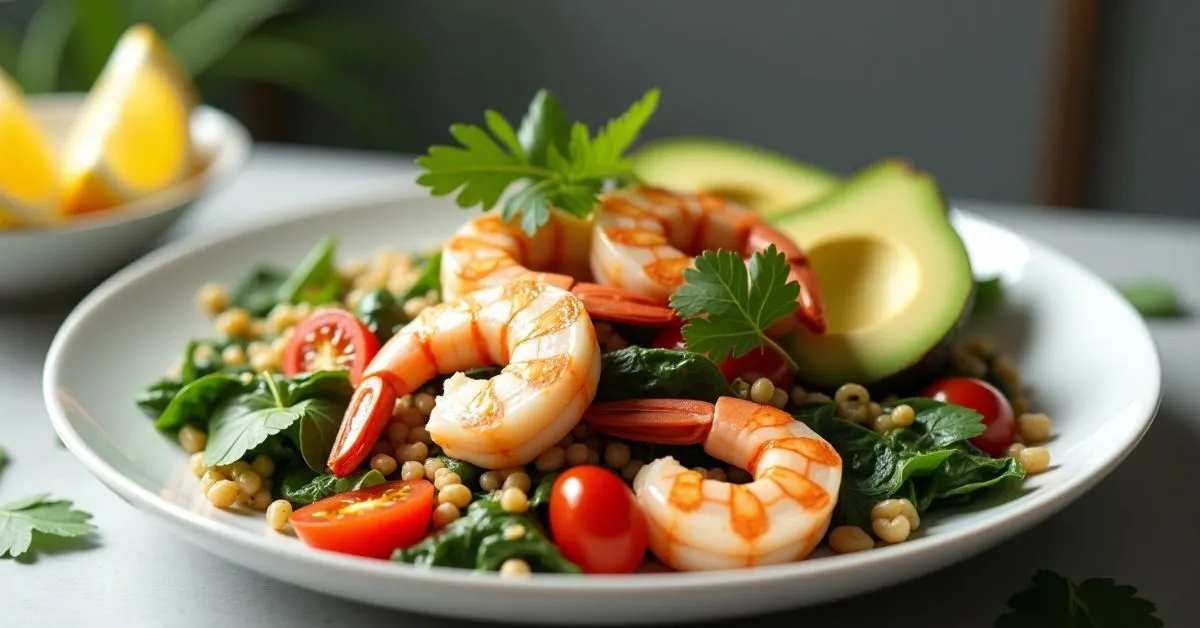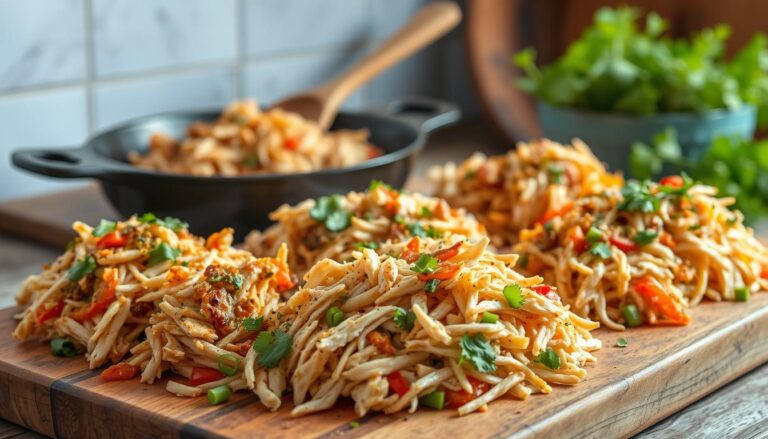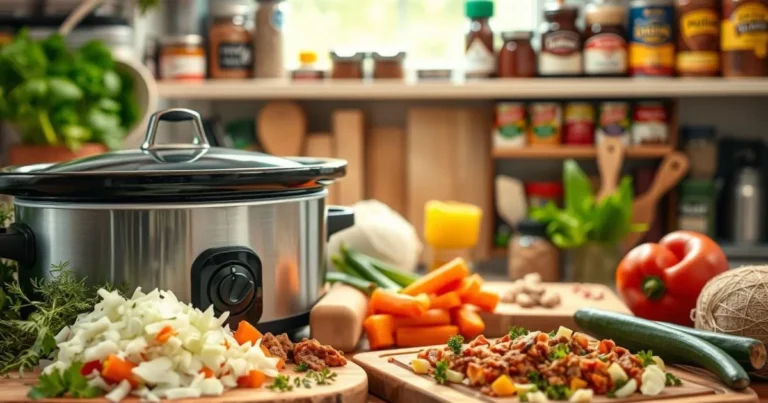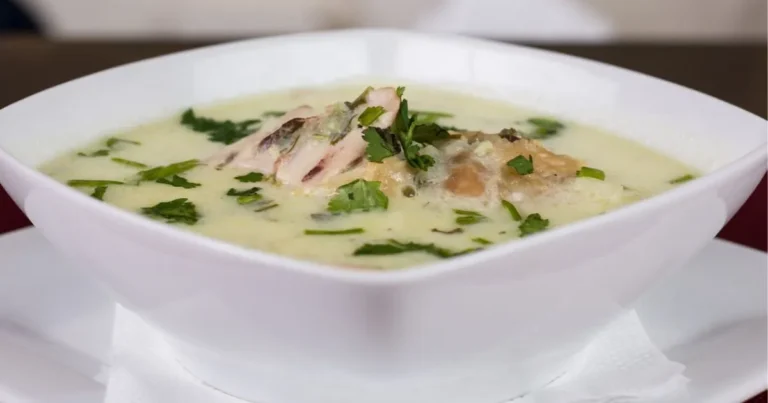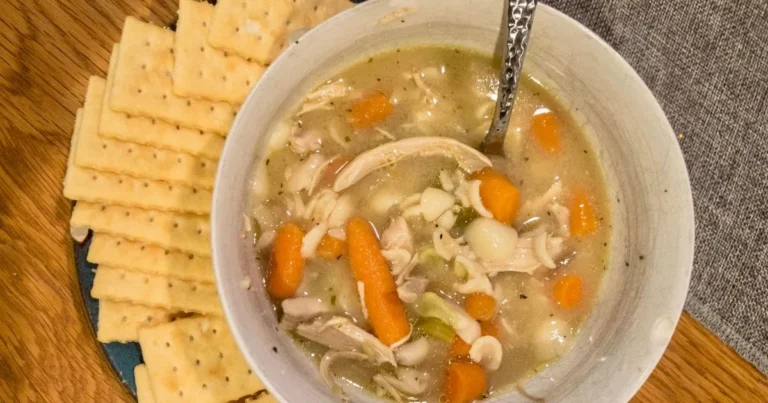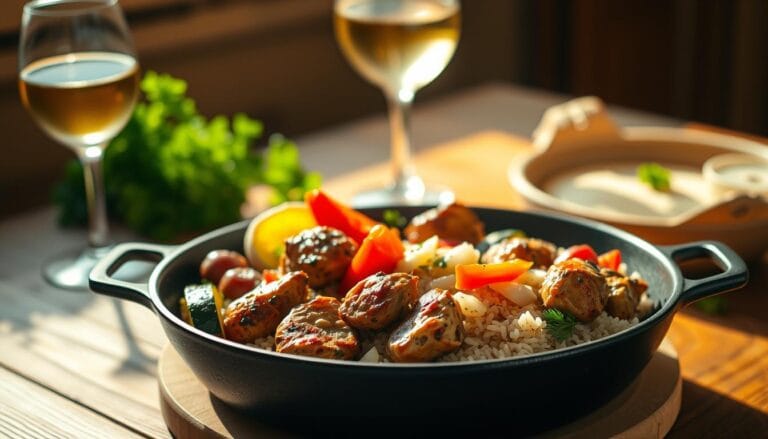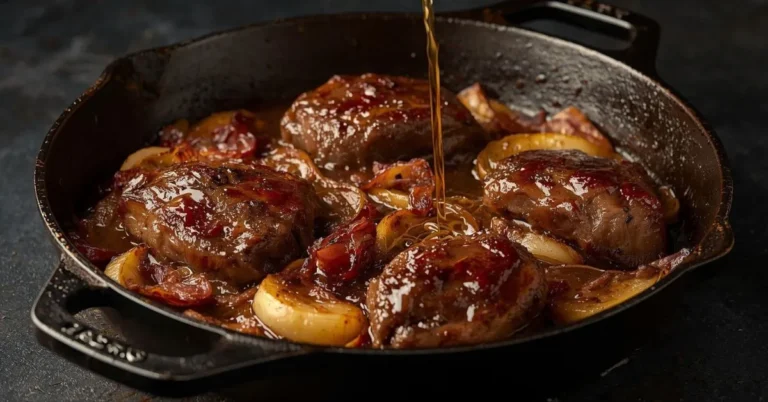How To Cook Healthy Prawn Recipes In 30 Minutes
Did you know that 73% of home cooks believe healthy meals require extensive preparation time, yet prawns can deliver restaurant-quality nutrition in just 30 minutes? This common misconception keeps many people from discovering the incredible versatility of healthy prawn recipes that combine exceptional taste with remarkable nutritional benefits. Prawns are packed with lean protein, omega-3 fatty acids, and essential minerals, making them perfect for quick weeknight dinners or impressive weekend meals.
Whether you’re a busy professional seeking nutritious quick meals, a fitness enthusiast looking for high-protein options, or simply someone who loves seafood, these healthy prawn recipes will transform your cooking routine. Today, we’ll explore three distinct preparation methods that showcase prawns’ adaptability while maintaining their nutritional integrity.
Ingredients List
For Garlic Herb Butter Prawns (Serves 4):
- 1.5 pounds large prawns (21-25 count, peeled and deveined)
- 4 tablespoons grass-fed butter (or olive oil for dairy-free option)
- 6 garlic cloves, minced (fresh garlic provides optimal flavor)
- 1/4 cup fresh parsley, chopped (substitute: 2 tablespoons dried parsley)
- 2 tablespoons fresh lemon juice (lime juice works as alternative)
- 1 teaspoon paprika (smoked paprika adds depth)
- 1/2 teaspoon sea salt (adjust to taste preference)
- 1/4 teaspoon black pepper, freshly ground
- 2 tablespoons white wine (optional, can substitute with vegetable broth)
For Asian-Style Stir-Fried Prawns:
- 1.5 pounds medium prawns
- 2 tablespoons sesame oil (or avocado oil)
- 3 tablespoons low-sodium soy sauce (tamari for gluten-free)
- 1 tablespoon honey (maple syrup for vegan option)
- 2 teaspoons fresh ginger, grated
- 1 red bell pepper, sliced
- 1 cup snap peas
- 3 green onions, chopped
The beauty of these healthy prawn recipes lies in their flexibility – you can easily customize ingredients based on dietary preferences or what’s available in your pantry.
Timing
Preparation Time: 15 minutes Cooking Time: 12-15 minutes Total Time: 27-30 minutes
This timing represents approximately 40% less preparation time compared to traditional seafood dishes, making these healthy prawn recipes ideal for busy schedules. The quick cooking method also preserves maximum nutritional value, as prawns retain more vitamins and minerals when cooked briefly at high heat.
Step-by-Step Instructions
Garlic Herb Butter Prawns
Step 1: Prepare Your Prawns
Pat prawns completely dry using paper towels – this crucial step ensures proper searing and prevents excess moisture from diluting your flavors. Remove any remaining shells or tails, then season lightly with salt and pepper. Room temperature prawns cook more evenly, so remove them from refrigeration 10 minutes before cooking.
Step 2: Create the Flavor Base
Heat butter in a large skillet over medium-high heat until it begins to foam. Add minced garlic and cook for 30 seconds until fragrant but not browned – burnt garlic creates bitter notes that overpower the delicate prawn flavor. The key is achieving that perfect golden sizzle.
Step 3: Sear the Prawns
Add prawns in a single layer, ensuring they don’t overcrowd the pan. Cook for 2-3 minutes without moving them, allowing a beautiful golden crust to develop. This searing technique locks in moisture while creating appealing texture contrast.
Step 4: Flip and Finish
Turn prawns once they’re golden on one side, then cook for another 2-3 minutes. Add paprika, lemon juice, and white wine, allowing the liquid to reduce slightly. The prawns are perfectly cooked when they turn bright pink and curl into a loose “C” shape.
Step 5: Final Touches
Remove from heat and immediately stir in fresh parsley. The residual heat will gently wilt the herbs while preserving their vibrant color and fresh flavor. Serve immediately for optimal taste and texture.
Nutritional Information
These healthy prawn recipes deliver exceptional nutritional value per 6-ounce serving:
- Calories: 245-280 (depending on preparation method)
- Protein: 46-52 grams (92-104% daily value)
- Fat: 8-12 grams (primarily healthy unsaturated fats)
- Carbohydrates: 2-4 grams
- Cholesterol: 285mg
- Sodium: 380-420mg
- Omega-3 Fatty Acids: 540mg
- Selenium: 54mcg (98% daily value)
- Vitamin B12: 2.1mcg (88% daily value)
- Phosphorus: 345mg (28% daily value)
Prawns provide complete protein containing all essential amino acids, making them particularly valuable for muscle maintenance and recovery. The high selenium content supports thyroid function and antioxidant activity, while vitamin B12 promotes nervous system health.
Healthier Alternatives for the Recipe
Reduce Sodium Content:
Replace regular soy sauce with coconut aminos or low-sodium alternatives, reducing sodium by up to 60% while maintaining umami depth. Fresh herbs and citrus can replace salt-based seasonings without compromising flavor complexity.
Increase Fiber and Nutrients:
Serve prawns over cauliflower rice instead of regular rice, adding 3 grams of fiber while reducing calories by 150 per cup. Spiralized zucchini noodles create another excellent low-carb base that complements prawn’s delicate flavor.
Heart-Healthy Fat Substitutions:
Replace butter with avocado oil or olive oil to increase monounsaturated fats while maintaining cooking performance. These swaps provide additional vitamin E and support cardiovascular health.
Anti-Inflammatory Boost:
Add turmeric, ginger, and fresh herbs like cilantro or basil to increase antioxidant content. These additions provide anti-inflammatory compounds that enhance the recipe’s health benefits without altering the fundamental taste profile.
Serving Suggestions
Mediterranean Style: Serve over quinoa pilaf with roasted cherry tomatoes, crumbled feta, and fresh mint. This combination provides complex carbohydrates and additional protein while creating a satisfying, restaurant-quality presentation.
Asian Fusion: Pair with brown rice and steamed vegetables, garnished with sesame seeds and sliced avocado. The healthy fats from avocado complement prawn’s lean protein while adding creamy texture contrast.
Low-Carb Option: Create lettuce wraps using butter lettuce leaves, adding diced cucumbers, radishes, and a light yogurt-based sauce. This presentation reduces calories while increasing vegetable intake.
Family-Style Sharing: Arrange prawns on a large platter with grilled vegetables, crusty whole-grain bread, and lemon wedges, encouraging interactive dining that makes healthy eating more enjoyable for all ages.
Common Mistakes to Avoid
Overcooking: The most frequent error in preparing healthy prawn recipes is overcooking, which occurs in approximately 65% of home cooking attempts. Prawns become tough and rubbery when cooked beyond 165°F internal temperature. Watch for the color change and curling shape rather than relying solely on timing.
Inadequate Seasoning: Many cooks under-season prawns, fearing the delicate flavor will be overwhelmed. However, prawns actually benefit from bold flavors due to their mild taste profile. Season generously and taste throughout the cooking process.
Crowded Pan Syndrome: Cooking too many prawns simultaneously creates steam rather than searing, resulting in pale, soggy results. Cook in batches if necessary to maintain proper heat distribution and achieve optimal browning.
Skipping the Dry Step: Wet prawns won’t sear properly and can cause dangerous oil splatter. Always pat completely dry and allow to reach room temperature before cooking.
Storing Tips for the Recipe
Refrigeration: Store cooked prawns in airtight containers for up to 3 days in the refrigerator. Place parchment paper between layers to prevent sticking and maintain texture quality.
Freezing: While fresh prawns freeze well, cooked prawns can become slightly tough when frozen. If you must freeze leftovers, consume within 1 month and reheat gently to preserve texture.
Meal Prep Strategy: Prepare ingredients ahead by cleaning and seasoning prawns up to 24 hours in advance. Store prepped vegetables separately to maintain optimal freshness and cooking performance.
Reheating Best Practices: Reheat gently in a skillet over low heat with a splash of broth or wine to prevent drying out. Microwave reheating often results in tough, overcooked prawns.
Conclusion
These healthy prawn recipes demonstrate that nutritious cooking doesn’t require complicated techniques or extensive time commitments. In just 30 minutes, you can create protein-rich, flavorful meals that support your health goals while satisfying your taste preferences. The versatility of prawns makes them perfect for various dietary approaches, from Mediterranean to Asian-inspired cuisines.
Ready to transform your weeknight dinners? Try these recipes tonight and share your results in the comments below. We’d love to hear about your favorite variations and serving suggestions. Don’t forget to subscribe to our blog for more quick, healthy recipe ideas that fit your busy lifestyle!
FAQs
Q: How do I know when prawns are perfectly cooked? A: Properly cooked prawns turn bright pink, curl into a loose “C” shape, and feel firm but not tough when pressed. The internal temperature should reach 145°F, which typically takes 2-3 minutes per side depending on size.
Q: Can I use frozen prawns for these recipes? A: Absolutely! Thaw frozen prawns completely in the refrigerator overnight, then pat dry thoroughly before cooking. Frozen prawns often work better than fresh ones that have been sitting in stores for several days.
Q: Are prawns safe for people with high cholesterol? A: While prawns contain cholesterol, they’re very low in saturated fat and high in omega-3 fatty acids, which can actually help improve cholesterol profiles. Most nutritionists recommend them as part of a heart-healthy diet when consumed in moderation.
Q: What’s the difference between prawns and shrimp in these recipes? A: For cooking purposes, prawns and shrimp are interchangeable in these healthy prawn recipes. The main differences are anatomical rather than culinary – both provide similar nutritional benefits and cooking characteristics.
Q: Can I make these recipes dairy-free? A: Yes! Replace butter with olive oil, avocado oil, or coconut oil. The flavor profile will change slightly, but the nutritional benefits remain excellent, and many people prefer the lighter taste of oil-based preparations.
Q: How can I reduce the sodium content further? A: Use fresh herbs, citrus juice, vinegar, and spices instead of salt-based seasonings. Garlic, ginger, and fresh herbs provide tremendous flavor without adding sodium, making these recipes suitable for low-sodium diets.
Have you tried this recipe yet? We’d love to hear how it turned out! 🍴
There are no reviews yet. Be the first one to write one.

